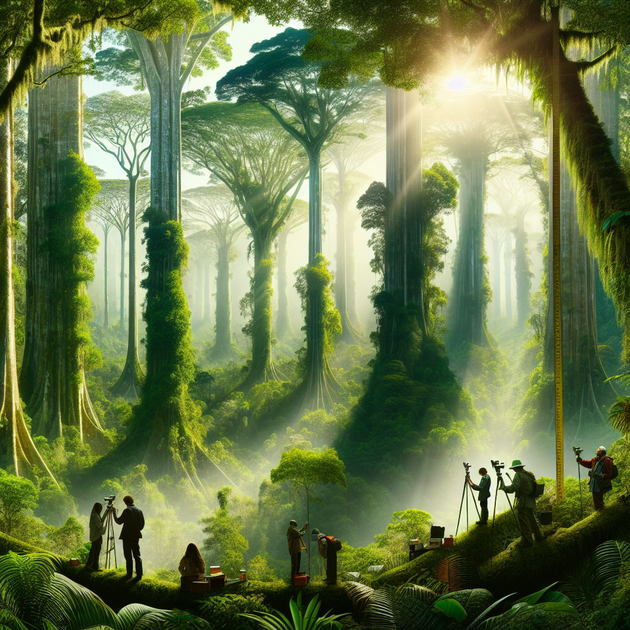Giant Trees of the Amazon Get Taller as Forests Fatten Up on Carbon Dioxide
What if one of Earth’s most famous forests was quietly transforming right under our noses? That’s exactly what scientists are seeing in the Amazon rainforest—giant trees shooting higher into the sky as they “fatten up” on a diet rich in carbon dioxide.
Why Are Giant Trees in the Amazon Getting Taller?
It might sound surprising, but plants love carbon dioxide (CO2). It’s a basic ingredient for photosynthesis—how they turn sunlight into energy. Over recent decades, human activities like burning fossil fuels have pushed atmospheric CO2 to record highs. While this spells trouble for many parts of our planet, it’s also giving some plants an unexpected boost.
The giant trees of the Amazon are responding by growing taller and denser than before. Studies show that as CO2 increases in the air, these towering giants pull more carbon from their surroundings and use it to build thicker trunks and reach new heights.
How Extra Carbon Dioxide Changes Rainforest Dynamics
So what does all this mean for one of Earth’s most biodiverse places? More CO2 doesn’t just give individual trees a growth spurt—it changes how entire forest systems work.
- Bigger canopies: Taller trees mean more leaves catching sunlight and pumping out oxygen.
- Storing more carbon: Thicker trunks act like vaults for excess CO2—helping slow global warming.
- Competition heats up: Fast-growing giants can overshadow smaller plants below.
- Wildlife shifts: Creatures that depend on certain tree sizes or light conditions may need to adapt.
But this “carbon feast” has its limits. If other essentials like water or nutrients run short—or if droughts become more common—these benefits could vanish.
An On-the-Ground Look: Life Among Giants
Picture a scientist standing in awe beneath a kapok tree—the kind that can tower over 200 feet high. In Brazil’s central Amazon, researchers measure these giants year after year with laser rangefinders and climbing gear. One conservationist described how a tree they’d tracked for over a decade seemed to “shoot upward” after especially warm years with higher CO2 levels.
Yet even among all this growth, there’s concern about what happens next. Bigger isn’t always better if it comes at the cost of other species or makes forests more vulnerable to storms and drought.
The Bigger Picture: What Does This Mean for Our Planet?
The fact that giant trees of the Amazon are getting taller might seem like good news in our fight against climate change—they’re storing more carbon than ever before! But there are still some big questions:
– Will these super-sized forests keep absorbing CO2 at today’s rate?
– How will changing tree sizes impact wildlife and plant diversity?
– Could bigger trees be at risk if storms or dry spells strike harder?
Scientists agree that while extra growth helps now, we can’t rely on it forever. Nature is resilient but not limitless.
Key Takeaways About Tall Trees and Rising CO2
Here’s what stands out from recent research:
- The world’s tallest tropical trees live in the Amazon—and they’re getting even bigger.
- This “growth spurt” is tied directly to rising atmospheric carbon dioxide.
- Taller trees help slow climate change by storing more carbon—but there are trade-offs for other species.
It all adds up to a picture that’s both hopeful and urgent. While nature adapts impressively to changing conditions, only reducing emissions long-term will protect places like the mighty Amazon for generations to come.
So what do you think—will Earth’s biggest rainforest keep getting bigger? Or is there an upper limit to how much help these giant trees can give us?

Leave a Reply